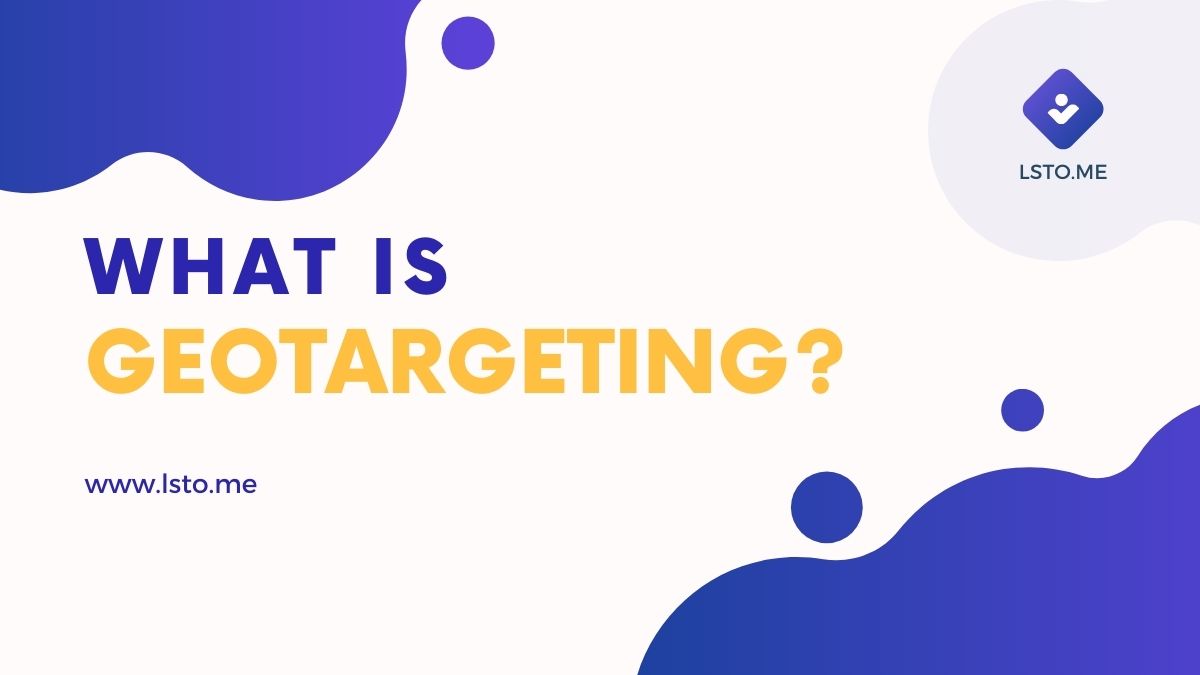
In today’s digital age, effective targeting plays a crucial role in maximizing the impact of marketing campaigns. One powerful targeting strategy that has gained significant traction is geotargeting. In this blog post, we will explore the concept of geotargeting and its advantages. By understanding how geotargeting works and harnessing its potential, businesses can reach the right audience at the right location, ultimately boosting their marketing success.
Defining Geotargeting:
Geotargeting, also known as location-based targeting, is a marketing technique that focuses on delivering tailored content or advertisements to specific geographic regions. With the advancement of technology and the widespread use of mobile devices, geotargeting has become an essential tool for businesses looking to reach their target audience effectively. By collecting data such as IP addresses, GPS coordinates, or zip codes, marketers can determine the physical location of users and provide them with personalized content based on their location.
One significant advantage of geotargeting is its ability to enhance customer engagement and improve conversion rates. By delivering relevant content or ads that are specifically designed for a particular region, businesses can create more meaningful interactions with potential customers.
How Geotargeting Works:
Geotargeting is a powerful tool that enables businesses to deliver targeted advertisements to specific geographic locations. The process of geotargeting involves the use of various data sources, including IP addresses, GPS coordinates, Wi-Fi signals, or user-provided information. These data sources help businesses determine the location of their target audience and tailor their marketing campaigns accordingly.
One common method used in geotargeting is through IP addresses. Every device connected to the internet has an IP address associated with it, which can provide valuable information about the user’s location. By analyzing this data, businesses can identify users’ geographical locations and display relevant ads based on their location.
Another important source of data for geotargeting is GPS coordinates. Many mobile devices have built-in GPS technology that allows them to track their precise location.
Advantages of Geotargeting:
1. Targeted Relevance:
Geotargeting enables businesses to tailor their marketing messages to specific regions or localities. By understanding the unique preferences, needs, and cultural nuances of different locations, marketers can craft highly relevant and personalized content that resonates with the target audience. This targeted relevance increases the likelihood of engagement, conversions, and ultimately, customer satisfaction.
2. Localized Offers and Promotions:
Geotargeting empowers businesses to offer location-specific deals, discounts, or promotions. For example, a restaurant chain can advertise special offers to people within a specific radius of their physical locations. This localized approach not only drives foot traffic but also enhances the overall customer experience by providing value that is specific to the user’s location.
3. Efficient Ad Spend:
Geotargeting allows businesses to allocate their advertising budgets more efficiently by focusing on areas with the highest potential for customer acquisition. Instead of broadcasting messages to a broad audience, marketers can concentrate their efforts on locations where their target demographic is concentrated, increasing the return on investment (ROI) of their advertising campaigns.
4. Local SEO Optimization:
Geotargeting complements local search engine optimization (SEO) efforts. By targeting specific locations, businesses can optimize their website and content to appear prominently in local search results. This helps improve visibility and attract customers who are actively searching for products or services in their vicinity.
Geotargeting Strategies:
1. Location-Based Ads:
By serving ads specific to a user’s location, businesses can create a sense of immediacy and relevance. For example, a retail store can display ads showcasing nearby store locations or upcoming local events.
2. Geo-Fencing:
Geo-fencing involves setting up virtual boundaries or perimeters around specific locations. When a user enters or exits these boundaries, businesses can trigger targeted ads or push notifications. This strategy is particularly effective for brick-and-mortar businesses looking to engage customers in proximity to their stores.
3. Localized Landing Pages:
Creating landing pages tailored to specific locations allows businesses to provide location-specific information, offers, and contact details. This approach enhances user experience and boosts the chances of conversion by providing users with localized content and a seamless path to engage further.
Conclusion:
Geotargeting is a powerful marketing tool that allows businesses to deliver personalized and relevant content to users based on their geographic location. By leveraging this strategy effectively, businesses can reach the right audience at the right place, driving engagement, conversions, and ultimately, business growth. With the ability to tailor messaging, offers, and promotions to specific locations, geotargeting empowers businesses to enhance customer experiences, optimize ad spend, and strengthen their local presence in an increasingly competitive digital landscape.




